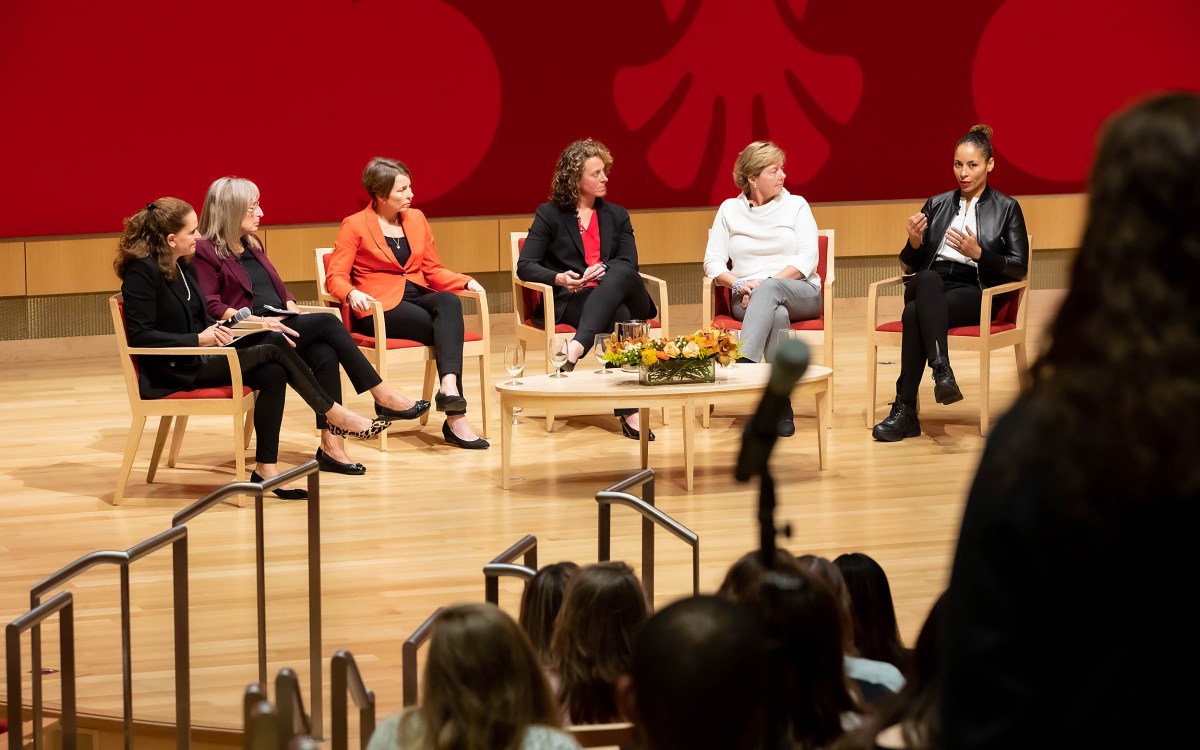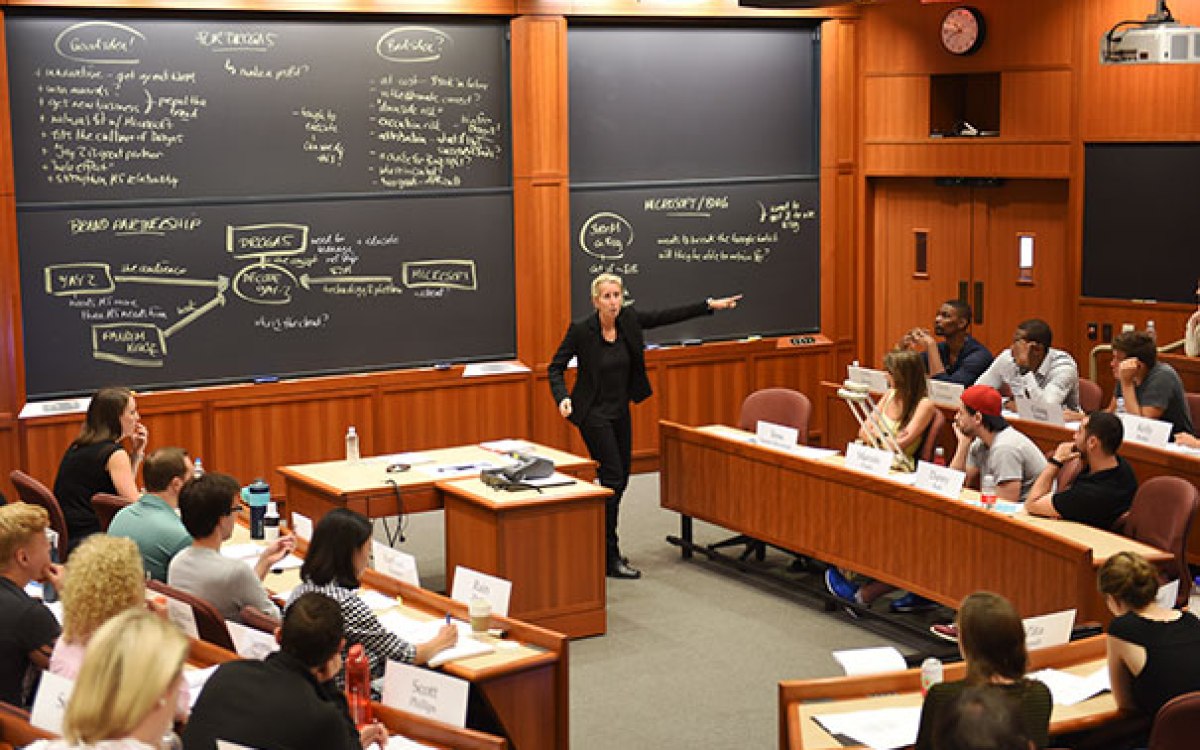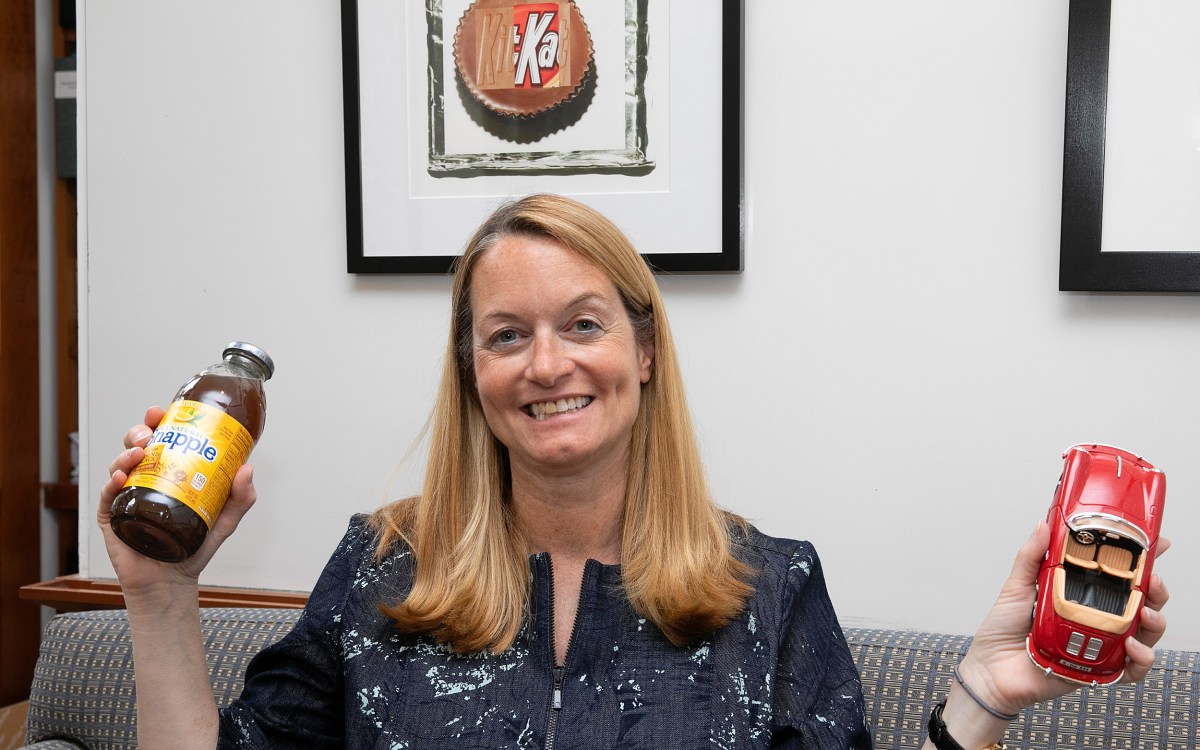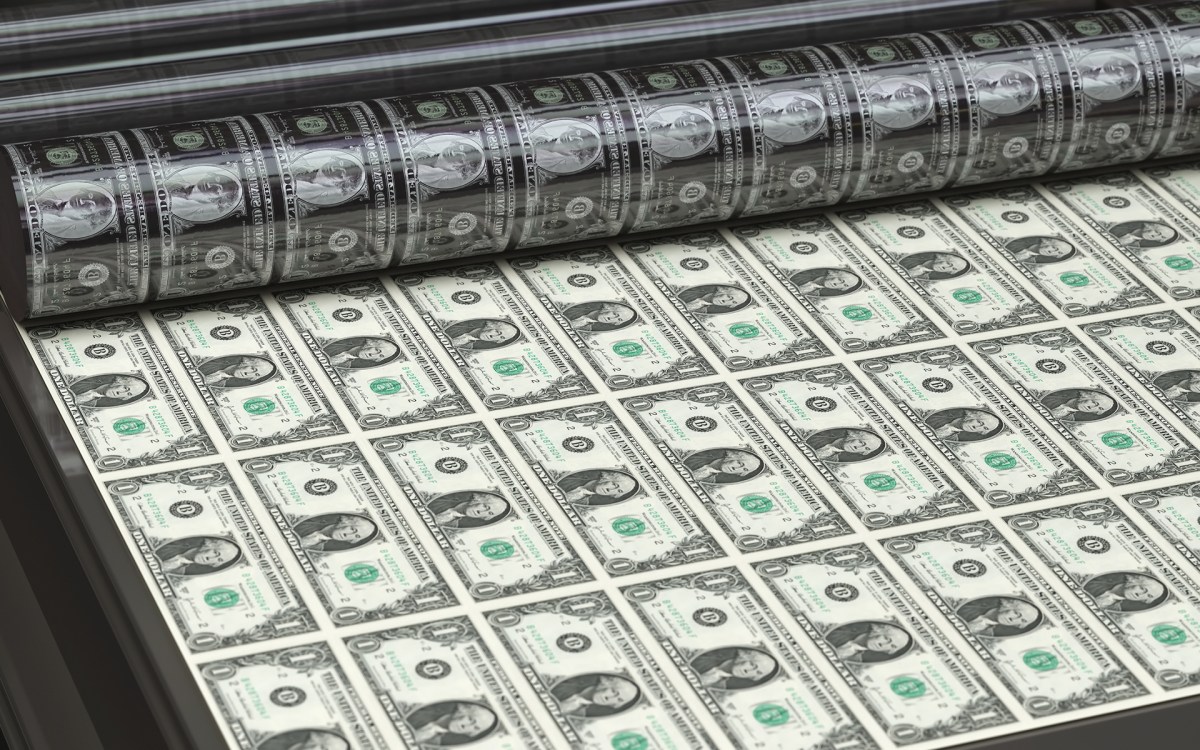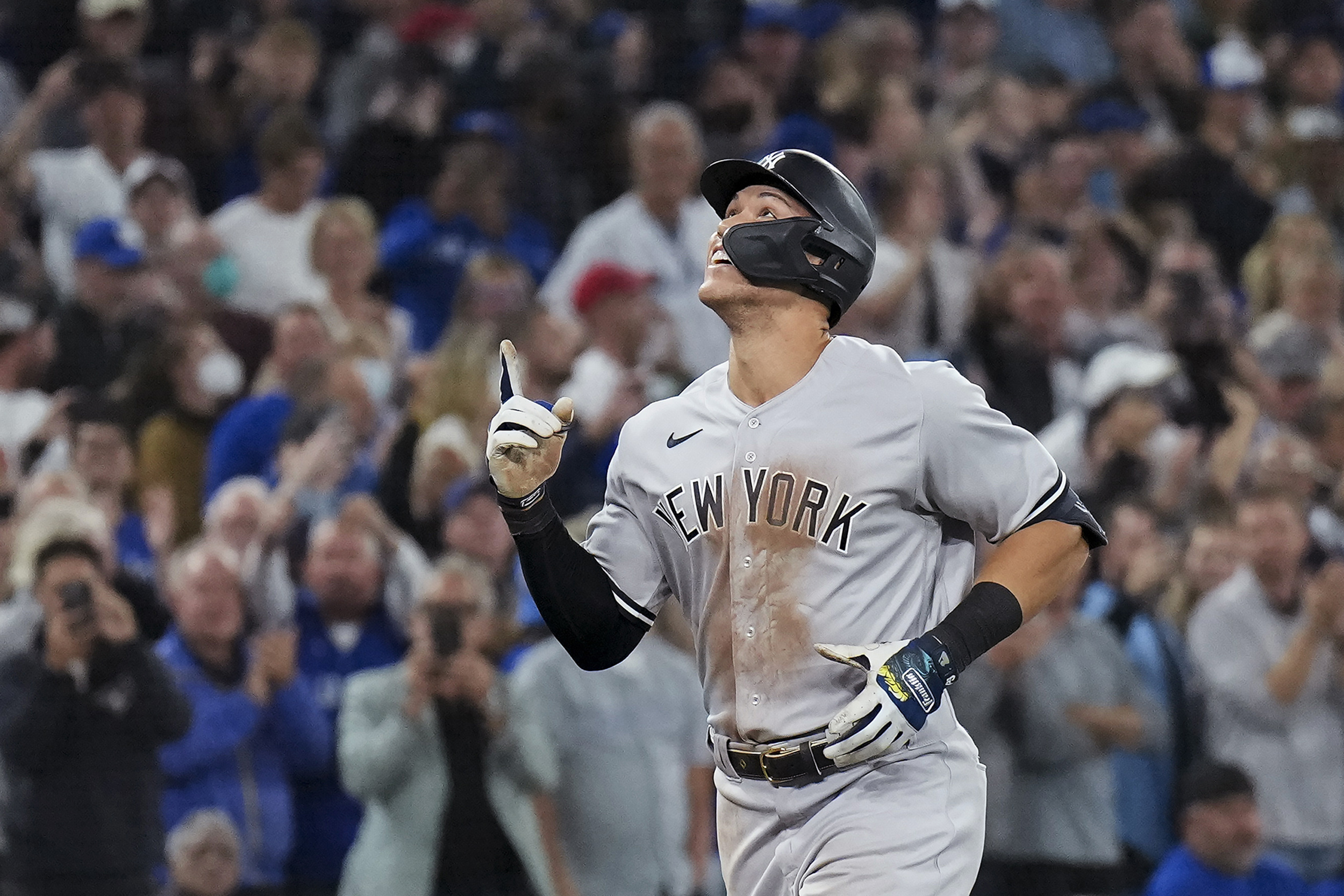
Yankees slugger Aaron Judge circles the bases after belting his 61st home run of the season.
Nathan Denette/The Canadian Press via AP
Is MLB ready to compete for next generation of fans?
Hurt by slower pace, insufficient on-field action, pro baseball trails NFL, NBA, European soccer in money, popularity, sports expert says
While football and basketball are now the most popular and financially successful of the four major professional sports leagues, Major League Baseball appears to be rallying. Last week, MLB said revenue for the 2022 regular season, which featured an American League record-setting 62 home runs by New York Yankee slugger Aaron Judge, would surpass the $10.7 billion it reported in 2019 — the last full season before pandemic interruptions. The league also signed new TV contracts with ESPN and TBS before this season, and next year will allow teams to display advertising patches on uniforms for the first time. Park attendance, however, continues its nine-year decline, and MLB trails the NFL, NBA, and English Premier League in annual TV/streaming revenue and in average team value.
Stephen A. Greyser, the Richard P. Chapman Professor of Business Administration Emeritus at Harvard Business School, studies brand marketing and communications. Greyser pioneered the academic study of the business of sports, helping develop the first sports business course at a major business school in the early 1980s. He spoke with the Gazette about MLB’s finances and prospects. Interview has been edited for clarity and length.
Q&A
Stephen A. Greyser
GAZETTE: How healthy is the business of Major League Baseball today?
GREYSER: They have stemmed some of the erosion on the financial side. But if you look at what the NFL does simply from television contracts, those monies annually dwarf all the numbers you just mentioned, which include everything for baseball. Baseball may be bouncing back to some degree, but at the end of the day, it still suffers from problems of pace, insufficient hit balls in play, and attracting younger fans.
GAZETTE: The product on the field is just too slow and boring for younger fans compared to, say, the NBA?
GREYSER: I’m not saying that it’s slow and boring, especially to knowledgeable fans. I’m saying the pace is not going to attract a more action-oriented, younger demographic. If we look at the business appeal of baseball, it’s hurt by the pace of the game; it’s hurt by the fact that hitting the ball is less of a factor compared to striking out or walking.
This year’s American League batting champion had the lowest average in decades. Carl Yastrzemski, or as he’s known locally, “Cahl” Yastrzemski, after his great 1967 season (one of the greatest seasons any individual ballplayer ever had) when he won the Triple Crown, in 1968, he hit .301 — the lowest average ever for a batting champion. This year, no American League batter hit above .315.
Average annual streaming and domestic TV revenues
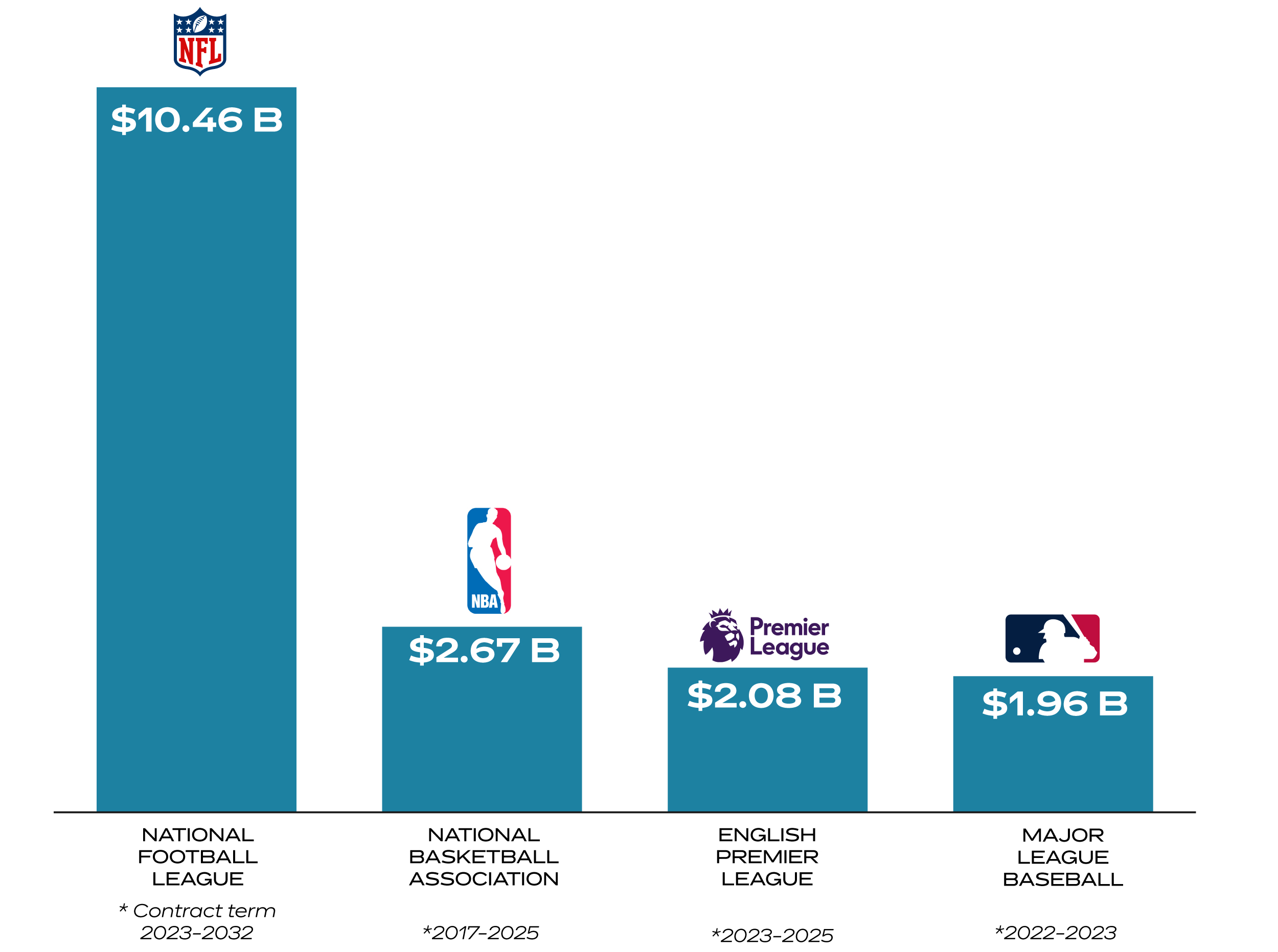
Source: Forbes annual NAME ranking, 2022
GAZETTE: So, the decline in offense is hurting the game?
GREYSER: The lack of operational offense. Meaning, yes, there are home runs, but the excitement of the game to many fans, maybe even to most fans, is a ball hit between the fielders with multiple runners on base, such as a bases-clearing double. Overall, if revenues from attendance are back where they were before the pandemic, and if television revenues are up, and if they’re going to have betting, which always increases revenues or relationship revenues anywhere it is, those are positive things.
GAZETTE: The league has made a number of rule changes over the last several seasons to try to speed up the games and make them more exciting, and plans to introduce more next year. Will any of them help?
GREYSER: The designated hitter in both leagues is something that is likely to be appealing to younger demographics because it makes for more action and less slow pace. The pitch clock will help. I favor a “batter clock” — meaning a batter can step out of the box only once during his time at bat. Some batters step out after every pitch, tug on their batting gloves, and they get back in. That’s a total waste of fan time. Infielder deployment restrictions might help offense (e.g., on left/right side of second base and not in the outfield). But I consider restricted infielder deployment to be very much off-target in terms of anybody who knows the character of the game. If a batter is good enough, he will find a way to hit around a shift. It’s up to each batter to earn his own hits. That idea is basically inflating batting averages artificially. Separately, the more balanced schedule will definitely help attendance, particularly when appealing visiting players come to your ballpark.
Average team value by league

Source: Forbes annual NAME ranking, 2022
GAZETTE: In recent years, English Premier League soccer and Formula One racing, two European sports, have grown significantly among under-40 Americans. Is baseball marketing the game effectively to reach this important demographic for advertisers and win over this potential new generation of fans?
GREYSER: They’re doing quite a bit, but remember, baseball is primarily a local game. A lot of that promotion is being done in each individual city. Whether it’s done by the individual club or whether it’s done by the league, most league promotions are done during their own games. The Premier League particularly has succeeded in making every game available on U.S. television. Other sports are visible, too, including mixed martial arts and e-sports.
Baseball could definitely do more promotion with their young stars. They tend to leave it to the individual teams.
It’ll be interesting to see what they do with home-run champion Aaron Judge. They’ve had those opportunities with Mike Trout and others like Mookie Betts. When the Los Angeles Angels came here and Shohei Ohtani was pitching and hitting, that was a big fan attraction. But the individual sports stars we see most often are usually from football and basketball. One of the indicators of a sport’s popularity is the athletes who are most popular. You won’t find very many baseball players high on that list.
GAZETTE: Sports gambling is now legal in most states. Massachusetts is expected to begin allowing it in early 2023. When people have money riding on games, they tend to pay closer attention to that sport. Do you expect sports betting will influence baseball’s popularity?
GREYSER: My own sense is that it remains to be seen the degree to which betting becomes a meaningful in-game proposition — where you can bet on whether somebody’s going to strike out or going to get a run home or how many men are going to get on base this inning. Whatever appeal it has, it will take maybe two or three years to sort out whether betting is a medium- to long-term phenomenon versus something that could be viewed as a fad. Also, I think that when betting is an endemic part of any sport, it raises the ante for player security and for watching out for the integrity of the game.
I won’t make any predictions, except that I would say that baseball is working hard to try to restore the revenue side and the attendance side. It’s complicated to determine what constitutes a trend. I would simply say they’re working hard, and they understand what they need to do.



